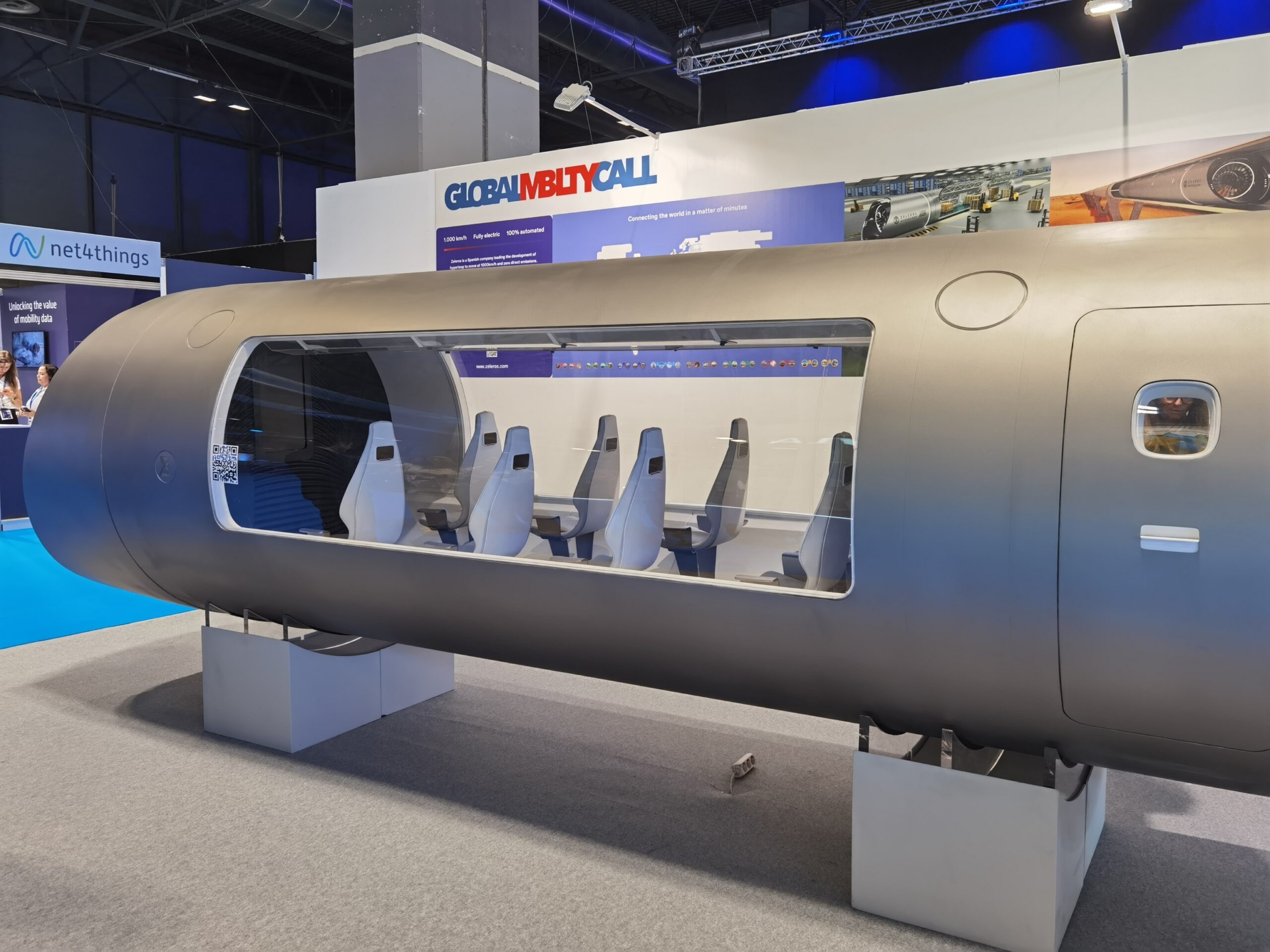MADRID – How about traveling by land from Buenos Aires to Santiago de Chile in just two hours or from Mexico City to San José de Costa Rica in three?
This is what would allow hyperloopa new method of ground transportation, which consists of capsules that travel levitating inside low-pressure tubes, transporting passengers and cargo at a speed of up to 1,000 kilometers per hour and on a zero-emission trip that would be ready to operate with passengers in 2030.
This new means of transport was developed by the Spanish company Zeleros and its prototype was presented at the Global Mobility Call, the World Congress on Sustainable Mobility that took place at the facilities of the Institución Ferial de Madrid (Ifema), between Tuesday 14 and Thursday 16.
It is just one example of the transport modes of the not so distant future, a mobility trend towards increasingly digitized mass transport solutions guided by artificial intelligence, together with micro-mobility solutions tailored to each person.
“The new generations do not understand the private vehicle in the same way as for the older generations.
previous ones continues to be a status symbol”, says Miguel Elizondo, from the Invertia Mobility Observatory.
This is an example of why automobiles are destined to go from being a highly idle privately owned element, which currently occupies two-thirds of cities, to one more shared medium in the mobility gear.
Cities are currently pushed to seek smart, safe, sustainable and inclusive mobility solutions that provide greater efficiency and quality of life in an increasingly globalized world. And Europe, with digitized and interconnected transport systems and the use of different renewable energy sources, is following this path.
But what about Latin America where 80% of its population lives in cities?
According to a study by the Inter-American Development Bank (IDB) carried out between 2021 and 2022, Latin America and the Caribbean is lagging behind in efforts to include more digital technologies in transportation. Despite the public policy efforts of some of the countries in the region to
a digital transformation in this sector, 40% of public agencies have yet to develop a digital transformation strategy, while for the private sector the figure is 27%.
The study Driving the digital transformation of transportation in Latin America and the Caribbean, carried out in conjunction with the Columbia Institute for Tele-information, found that two out of three organizations already have a digital transformation strategy, while in 2019 they barely had one. knowledge on the subject.
However, 43% acknowledged being behind or very behind compared to the average for Latin America and the Caribbean, a figure that rises to 67% when compared with entities from leading countries worldwide.
According to Facia Pusterla, representative of the IDB office in Europe, this digital transformation of transport in the region at different speeds is influenced by the costs of technology, the lack of human talent, financial resources, as well as resistance To the change.
A region with great challenges
This situation is just the tip of the iceberg in a region that is making very uneven progress on the issue of mobility, with great social, political and economic challenges; in addition to a high vulnerability to climate change, with losses that, according to the IDB, could reach 100 billion dollars by 2050 and from which the transport infrastructure is not exempt.
The sustainability of the transport sector is also vital to comply with the 2030 Agenda and the Sustainable Development Goals (SDGs), as well as with the climate goals of Latin American countries.
According to the World Bank, in the region 35% of greenhouse gas emissions related to fossil fuels come from the transport sector, a much higher percentage than the world average, which stands at 22%.
And Latin America’s private vehicle fleet is growing faster than any other region and is projected to reach three times its current size by 2050.
Bogotá, the capital of Colombia, is one of the cities in the region that has made a strong commitment not only to electromobility, with a fleet of 1,485 electric buses, the largest after China, but also with a variety of means of transport. interconnected, such as trams and subways, within the framework of a mobility and territorial planning plan.
This plan also integrates micro-mobility solutions, such as the provision of 1,500 shared bicycles, some of which are adapted for people with disabilities.
However, the experience of Bogotá is still the exception and not the rule in the region. Felipe Ramírez, Secretary of Mobility of the City of Bogotá, points out that Latin America has a very significant lag in infrastructure, which takes time and involves financial resources to access technologies, but turns out to be an important step to achieve sustainable and inclusive mobility. .
“When we invest in electric vehicles, we are also helping to improve the health of citizens and their quality of life, guaranteeing accessibility and making a more egalitarian city,” he points out.
It also highlights the region’s water wealth as an advantage for the production of clean energy that can serve the transportation sector.

uneven advance
Javier Navarro, who is in charge of Operations and Business Development at QEV Technologies, a Spanish company focused on electromobility with business in Latin America, points out that the region lacks standardization, infrastructure and financing.
“There are countries where electromobility is something very real, like Chile or Colombia, but others are still thinking about it,” he says.
Navarro highlights the great potential that hydrogen has as a fuel, mainly for freight transport over distances of 400 kilometers or more, where electric batteries are not a viable solution, but it still represents an expensive technology that requires, among other things, solutions supply infrastructure.
For Antonio Lucio Gil, president of the World Wide Fund for Nature in Spain and an expert in mobility, the use of renewable sources for truly sustainable mobility also implies global governance of the materials involved in the origin to avoid the same conflicts and speculation that has been generated with fossil fuels.
This is the case of the minerals that are used in batteries, he argues, “since they are concentrated in very few countries, there is a lack of knowledge about the reserves that exist and how that wealth is produced and distributed.”
It also highlights that “it is vital to introduce the social aspect of the transition to electromobility in a very committed and intelligent way to avoid inequalities with the most disadvantaged sectors with access problems”.
Impact reduction
Rana Adib, executive director of REN21, agrees with Lucio Gil that the transport sector should not repeat the same problems generated by fossil fuels. “All technology and infrastructure generate impacts, so you have to have standards in terms of, for example, minimum use of materials and recycling,” she says.
According to Adib, renewable energy is a real opportunity for the economic development of Latin America at a time when fossil fuel prices are extremely high, but the participation of all social actors and the use of renewable energy sources is vital. local.
For the renowned American economist and world leader in sustainability Jeffrey Sachs, Latin America and the Caribbean requires infrastructure, common strategies and a Green Pact like the European one, which seeks to make the continent zero emissions by 2050.
However, it will only be able to overcome its challenges in an integrated way. “The divisions that exist right now in Latin America are artificial, even those policies are small compared to the common interests of the region,” he says. And sustainable mobility, without a doubt, is one of them.
This is an article from LatinClima, a communication network on climate change, with which IPS maintains an alliance for the distribution of its content.
RV: EG
–

